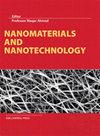利用纳米尺度无规摩擦结构增强有机发光二极管的光学性能
IF 3.3
3区 材料科学
Q2 MATERIALS SCIENCE, MULTIDISCIPLINARY
引用次数: 0
摘要
在这项研究中,我们通过一种创新的制造方法评估了用于有机发光二极管(oled)散射层的纳米级随机摩擦结构(nRRS)。摩擦技术是一种传统上仅用于液晶排列的制造工艺,其优点是即使在室温下也可以在不需要真空设备的情况下大面积形成纳米级无规波纹,而且工艺简单、成本低廉。通过摩擦法制备的nRRS具有97.8%的高透光率和17.8%的高雾度,适合作为oled的散射层。由于其随机性,将波导光重新排列在玻璃衬底内,可以有效地产生散射效应。结合优化后的nRRS, OLED的外量子效率提高了25.4%。此外,由于视角的不同,光谱畸变也得到了缓解,这一点可以通过国际照明委员会(International Commission on Illumination) 1931色彩空间坐标(∆(x, y) =(0.01, 0.013))的可忽略差异得到证实。通过时域有限差分仿真对nRRS-OLED的光学性能进行了预测,并与实际器件的光学性能进行了验证。该研究有望广泛应用于许多光学器件中,因为它可以在器件外部形成随机波纹,而无需简单地制造有益的光学结构。本文章由计算机程序翻译,如有差异,请以英文原文为准。
Enhancing the optical performance of organic light-emitting diodes using nanoscale random rubbed structure
In this study, we evaluated a nanoscale random rubbed structure (nRRS) used as a scattering layer in organic light-emitting diodes (OLEDs) through an innovative manufacturing method. The rubbing technique, which is conventionally utilized only for liquid crystal alignment, is a manufacturing process with excellent merit in that it can form nanoscale random corrugation in a large area without vacuum equipment even at room temperature, and it is simple and inexpensive. The optimized nRRS, fabricated via rubbing, exhibited a high transmittance of 97.8% and haze of 17.8%, making it suitable as a scattering layer for OLEDs. Owing to its random nature, the scattering effect occurred effectively by rearranging the waveguided light inside the glass substrate. The OLED combined with the optimized nRRS showed a 25.4% improvement in the external quantum efficiency. Additionally, the spectral distortion according to the viewing angle was alleviated, which was confirmed by the negligible difference in the International Commission on Illumination 1931 color space coordinates (∆(x, y) = (0.01, 0.013)). The optical performance of the nRRS–OLED was predicted through a finite-difference time-domain simulation and verified by showing results consistent with those of the fabricated device. This research is expected to be widely applied in many optical devices because it is possible to form a random corrugation on the outside of the device without the difficulty of simply fabricating a beneficial optical structure.
求助全文
通过发布文献求助,成功后即可免费获取论文全文。
去求助
来源期刊

Nanomaterials and Nanotechnology
NANOSCIENCE & NANOTECHNOLOGY-MATERIALS SCIENCE, MULTIDISCIPLINARY
CiteScore
7.20
自引率
21.60%
发文量
13
审稿时长
15 weeks
期刊介绍:
Nanomaterials and Nanotechnology is a JCR ranked, peer-reviewed open access journal addressed to a cross-disciplinary readership including scientists, researchers and professionals in both academia and industry with an interest in nanoscience and nanotechnology. The scope comprises (but is not limited to) the fundamental aspects and applications of nanoscience and nanotechnology
 求助内容:
求助内容: 应助结果提醒方式:
应助结果提醒方式:


